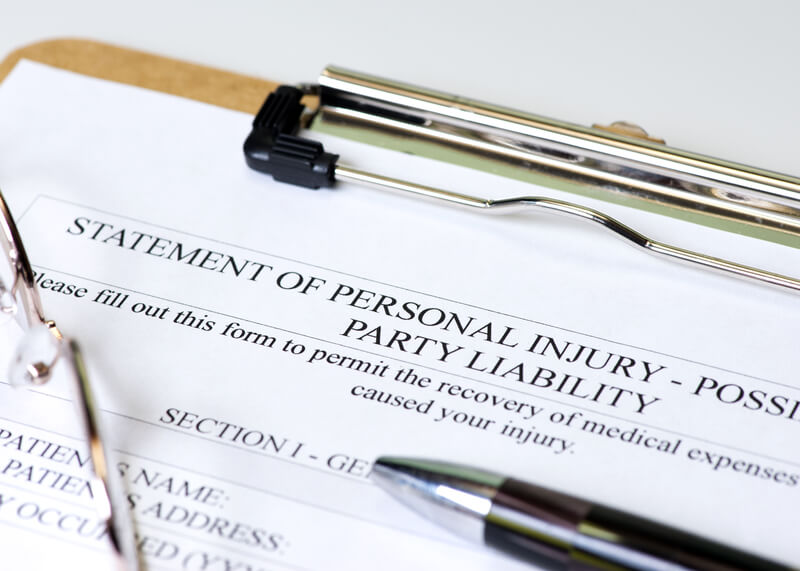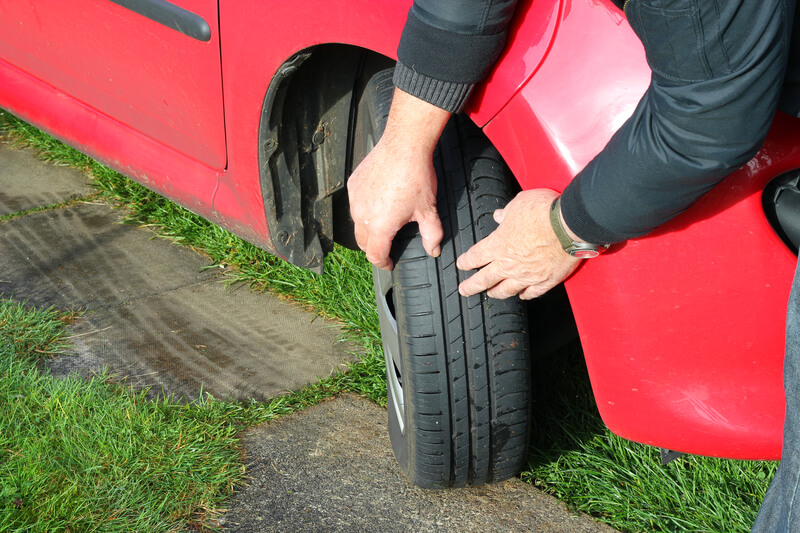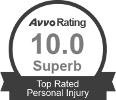In October 1969, Atlanta debuted a new convenience: a 64-mile loop of a highway, meant to help drivers on I-85 and I-75 bypass the city [source: 11 Alive]. Originally only two lanes in each direction, the highway may have felt like a good fit for a growing city, but as road volumes skyrocketed, and as Atlanta’s suburbs expanded, I-285 earned a reputation for congestion and car accidents.
Unfortunately, highway I-285 in Atlanta also has the unfortunate distinction of being one of the deadliest highways in the country. How did I-285 become so dangerous, and why is Atlanta traffic so bad?
What makes Atlanta’s I-285 so dangerous?
A few years back, a reporter for Vox studied data from the National Highway Traffic Safety Administration, connecting each reported fatal crash to the road it occurred on. I-285 topped the list when the reporter looked at fatal crashes per 10 miles. In 2013, the year studied, there were 3.5 fatal crashes per 10 miles.
More recently, the American Transportation Research Institute published a study on the country’s worst bottlenecks, using GPS data culled from more than a million freight trucks. No. 4 on the list was I-285’s Spaghetti Junction (I-285 at I-85 North), where the average speed is only 38.9 mph. No. 5 was I-20 at I-285. (I-75 at I-285 North, I-285 at SR 400 and I-20 at I-285 East also ranked in the top 21 worst bottlenecks.)
So why does Atlanta have the worst traffic? I-285 seems to have the exact wrong combination of elements to make it particularly congested and dangerous:
- Commuters. The city’s overflowing in-town roads and limited public transit system mean plenty of folks have to drive on the highway daily to get where they’re going. Plus, the highway is surrounded by busy suburbs on all sides, like Smyrna, Forest Park, Tucker, Sandy Springs and Dunwoody.
- Out-of-towners. It is the Atlanta bypass, after all. Many drivers are trying to skate around the city and may not be ready for the road’s issues and construction complications. Add to that its proximity to Hartsfield-Jackson, the busiest passenger airport in the world.
- Truckers. Like vacationers or people headed to the airport, big rig drivers are trying to get around the city, not drive through it. The large number of trucks makes it more dangerous for everyone.
Dangerous Driving Habits to Avoid on Atlanta Roads and Highways
For most Atlantans, I-285 is unavoidable, even if you do your best to steer clear of the often-gridlocked highway. If you’re driving on I-285, or on any of Atlanta’s roadways, avoid a traffic accident by avoiding these six dangerous driving habits identified by the National Highway Traffic Safety Administration:
- Don’t drive drunk. Alcohol slows your reaction time, affects your depth perception and clouds your judgment. Even buzzed driving can be deadly.
- Don’t drive under the influence of other substances. Even legal drugs can lead to side effects that are dangerous on the road. If you’re taking prescription medications, be sure they don’t affect your driving.
- Don’t drive distracted. Reading a text takes your eyes off the road for about 5 seconds, according to the NHTSA. Before you turn on your car, put your phone out of reach and out of sight.
- Don’t forget to buckle up. Back in I-285’s early years, crash fatalities around the country were high in large part because of lower rates of seatbelt use. While more than 90 percent of people use seatbelts today, it’s important to remember why: Your risk of fatal injury drops by 45 percent when you buckle up.
- Don’t speed. By slowing down, you’re less likely to miss the unpredictable actions of other drivers, bicyclists, pedestrians and animals. When crashes do occur, speed also makes the severity of injuries worse. Keep a careful eye on changing speed limits and construction zones.
- Don’t drive drowsy. Whether you work a night shift, you’re a new parent or you’re a teen whose schedule doesn’t match your sleep needs, drowsy driving is a serious risk. Try to avoid driving during the hours you’re most likely to be fatigued and take a break if you’re showing signs of falling asleep.
Traffic Tips for Safe Driving in Atlanta
While avoiding dangerous driving habits is a great start to becoming a safe driver, Atlanta traffic also requires some local know-how.
- Take time to plan your trip. If you’re not driving to a familiar location, take a little time to map out a new route ahead of time. Where is your GPS app planning to send you? If you’ll be on a highway, what is your exit? Is the route about to force you into a left turn onto North Druid Hills as a so-called time saver?
- Be Patient. Once you’re out of the driveway, practice your patience and stay kind—even in the face of inconsiderate or aggressive drivers. This means signaling, never tailgating and acknowledging polite behaviors from other drivers.
- Be Aware of Upcoming Events. Atlanta events tend to further congest city traffic, so stay aware of major festivals, games or tournaments, concerts and university graduations.
- Look For Exit-Only Lanes. Move out of the right lane when you’re traveling on Atlanta’s highways. Staying put will only lead to you being shuffled off at the next exit or scrambling to merge last-minute.
- Navigate potholes responsibly. Atlanta’s streets sometimes seem more metal than asphalt, but take care when driving over these daily hazards. Slow down and maneuver around them, but avoid driving into oncoming traffic.
What Time Is Atlanta Rush Hour and How Should I Prepare?
Often, drivers passing through Atlanta try to time their travel to avoid rush hour. On Atlanta‘s busiest roads, locals know it’s almost impossible to find that unicorn window of time. It is possible to know when Atlanta’s traffic will likely be at its worst and adjust schedules accordingly.
According to TomTom Traffic Index, Atlanta’s rush hour starts at about 6 a.m. and peaks at 8 a.m. Traffic stays congested all morning, through the lunch rush and into the early afternoon. At 3 p.m., there’s a major uptick in traffic (even earlier on Fridays), which stays steady until 7 p.m. Atlanta traffic is at it’s worst on Fridays at 4 p.m.
So how can you avoid Atlanta traffic? MARTA offers direct connections for some Atlanta commuters (not to mention anyone traveling to the airport). MARTA’s effectively connects high-traffic areas in Atlanta like Buckhead, Brookhaven, Midtown and Downtown, along with popular East and Westside neighborhoods. If it’s more relaxing to listen to a podcast or read a book on your commute instead of battle traffic, public transportation might be a good fit to avoid Atlanta traffic on I-285 and other major highways.
Peach Pass, express toll lanes operated by the Georgia Department of Transportation (GDOT), is an effective alternative for commuters who travel from outside the Atlanta perimeter and MARTA is not easily accessible. The toll rates change based on demand for the special lanes, and you’ll be able to decide if it’s worth the expense before entering.
What To Do if You Get Into a Car Accident?
Any car crash can be frightening, but a I-285 wreck or highway car accident poses additional challenges. After any auto accident, you’ll want to:
- Call 911. Immediately after an I-285 crash or other automobile accident, first check yourself for injuries. If you’re able to, call 911 and request medical attention. If you haven’t been seriously hurt, check on your passengers and the driver or occupants of the other vehicle.
- Get to a safe location. If you’re in a dangerous location, like on a highway or at a busy intersection, turn on your hazards and try to move your car to the shoulder if possible. If you’re able to safely exit the car, do so, moving as far away as possible from the road. Never stand between stopped cars—fatal accidents or serious injuries can occur when another motor vehicle rear-ends a disabled vehicle.
- Document the scene. While you may feel disoriented or be injured, do your best to document the crash and fortify your eventual personal injury case. Request the other driver’s name, address, telephone number and license number. Ask for the drivers’ insurance carrier and the policy number and note the car’s make and model. Take photos of the damage, the accident scene and any contributing factors, like a flashing light or debris in the road. If you need help, call a friend or family member to join you on the scene.
- Identify witnesses. Take the name, address and phone number of any witnesses who saw what occurred. While you don’t want to interfere in any way with the responding officers’ work, ask how you can receive a copy of the accident report and note their names and badge numbers.
- Get medical attention. Don’t wait for symptoms to resolve on their own. Talk to your doctor, seek emergency care if needed and follow up with any specialist appointments. Your personal injury attorney will need to show that your injuries are clearly connected to the crash in question.
Atlanta Car Crash Lawyers
If you’ve been injured in a car accident, you deserve fair compensation. An Atlanta car accident attorney can help you take on the insurance company, allowing you to move on with your life. Contact the Georgia personal injury attorneys at Litner + Deganian for a free consultation
Related link:












